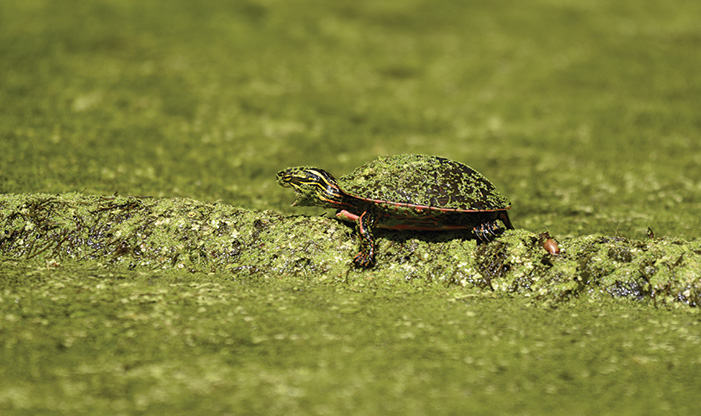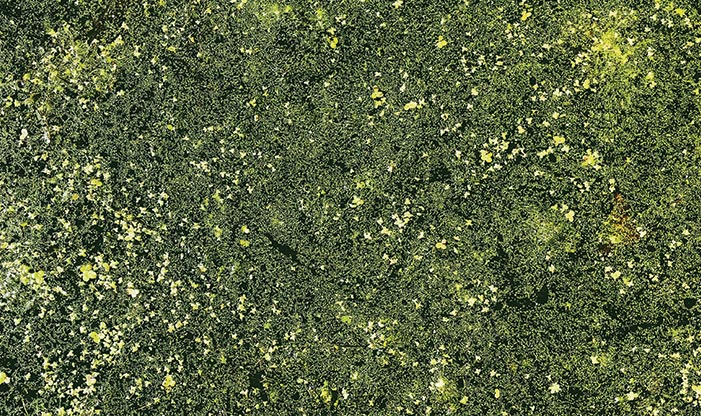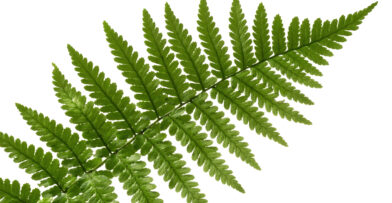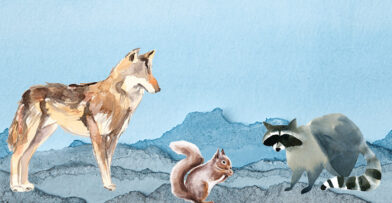 When hiking at Turtle Pond visitors will see a layer of bright green on the surface beginning mid- to late-June. This can be mistaken for algae, but are actually small flowering plants called duckweed that often cover the entire water surface. This useful plant provides food and a safe environment for a number of animals and reduces the mosquito population.
When hiking at Turtle Pond visitors will see a layer of bright green on the surface beginning mid- to late-June. This can be mistaken for algae, but are actually small flowering plants called duckweed that often cover the entire water surface. This useful plant provides food and a safe environment for a number of animals and reduces the mosquito population.
Duckweed at the Center
There are four species of duckweed at the Center: greater and lesser duckweed, water meal, and forked duckweed. Greater duckweed’s leaf has a purple layer underneath with multiple roots extending downward from each plant body. Greater duckweed often exists beside lesser duckweed, which is green underneath and has one root. Surrounding these two, there are often tiny, circular green plants that look like their name, water meal. Forked duckweed has clusters of paddle-shaped leaves and forms a latticework just below the surface.
As its name suggests, duckweed is food for ducks. It thrives in well-sheltered, forested ponds without springs, whose source of water is rain. When ponds aren’t spring-fed and don’t have too much wind to stir the surface, the pond has little source of oxygen, creating dystrophic conditions. Dystrophic is defined as ill-fed. It means there are deficiencies in nutrient flow through the system.
The Right Conditions to Grow
Duckweed flourishes in dystrophic conditions and their life cycle help to create them. It spends winters on the pond floor as a winter bud called a turion to escape freezing conditions. When sunlight and warmer temperature of spring arrive, the turions begin to photosynthesize, creating gas bubbles and floating to the surface. This process blocks light for other bottom-dwelling plants, slowing their growth and limiting the amount of oxygen produced, promoting anaerobic conditions. Although these conditions signal poor nutrients in the soil, the water can possess them. Duckweed does well in high-nutrient water, but is not as reactive as algae to rapid influxes.
Duckweed will reproduce until it fills the surface. When it does fill the surface, it suffocates mosquito larva, so it is a mosquito reducing plant. Duckweed is a flowering plant, the flowers are rare and so small you need a powerful hand lens to see them.
Lack of oxygen makes this kind of pond inhospitable to fish. You won’t see fish in Turtle Pond. But, invertebrates, having no predators and access to increased nutrients will do well. Salamanders live nicely alongside duckweed as it eliminates fish who would eat them. You will also see frogs, toads, and turtles in this kind of pond, although duckweed isn’t a food source for them. Because of the wildlife inhabiting these waters, they are excellent for pond exploration!
To see these amazing plants, visit Turtle Pond at the Center. Watching the interplay of the green, watery surface along with the activity of numerous frogs, turtles, and invertebrates is a remarkable sight.


